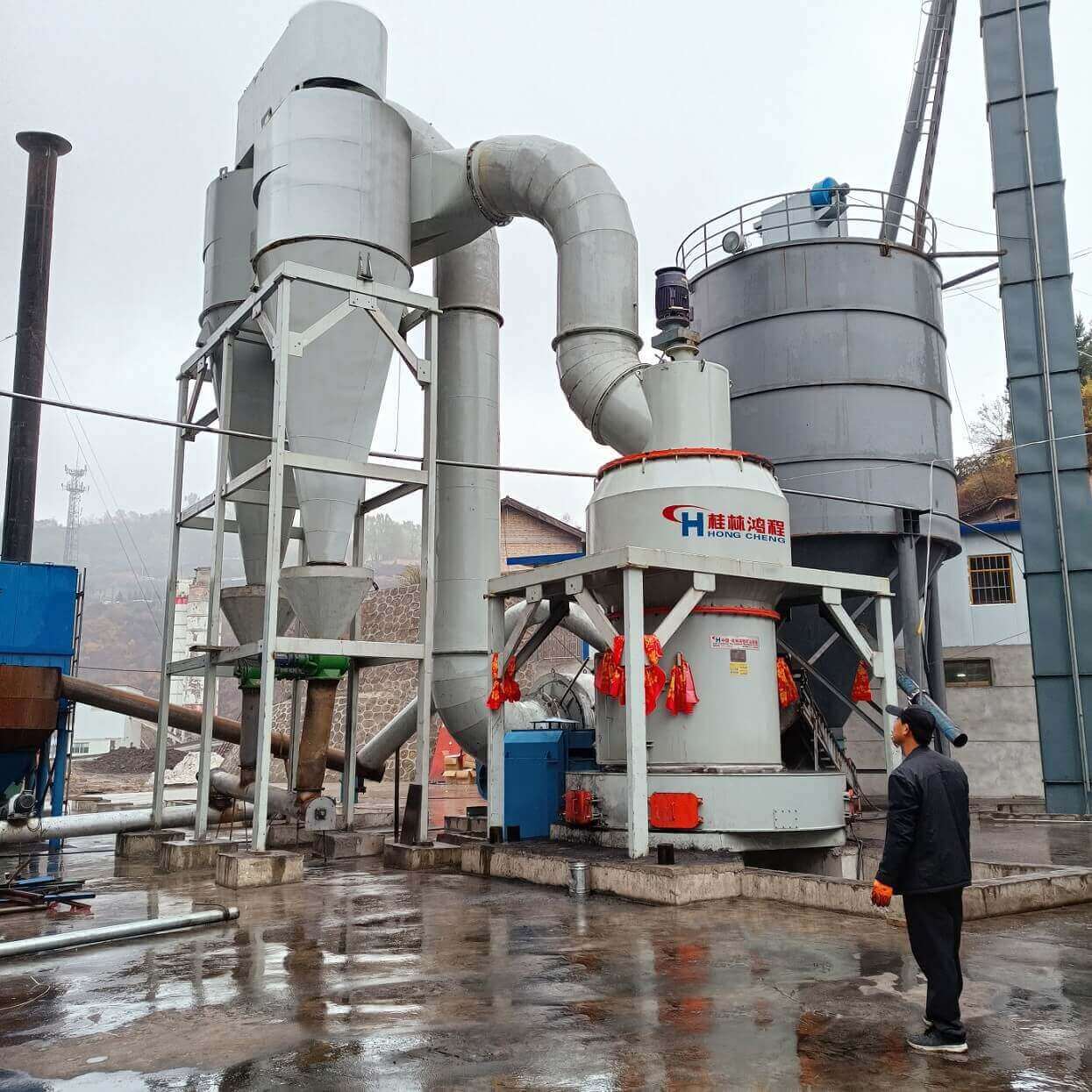Magnesite ore processing powder has good fire resistance and adhesiveness, and is also the main raw material for refining magnesium metal. It is also used to produce high-grade magnesia refractory materials, new building materials, and fine chemical materials.
The purpose of processing magnesite ore powder is to separate silicate minerals from magnesite and magnesite from dolomite. Mineral beneficiation and purification are mainly achieved through heavy media, thermal separation, flotation and carbonization. These methods require processing magnesite ore into powder. Magnesite ore powder processing is usually achieved by using a large Raymond mill.
The process flow is as follows: raw materials with suitable particle size are fed into the main machine through the feeding mechanism (vibration/belt/screw feeder or air-lock feeder, etc.); the high-speed rotating grinding roller is tightly rolled under the action of centrifugal force. On the grinding ring, the scraper shovels up the material and sends it to the grinding area formed by the grinding roller and the grinding ring. The material is broken into powder under the action of the grinding force; under the action of the fan, the ground material is blown up into powder. After passing through the sorting machine, those that meet the fineness requirements pass through the sorting machine, and those that do not meet the requirements are stopped by the sorting machine and return to the grinding chamber to continue grinding.
Magnesite has a wide range of uses and is mainly used for the refining of magnesia, including dead-burned magnesia, light-burned magnesia and fused magnesite. The three are mainly used to produce magnesia refractory materials and related products. It accounts for 90% of the consumption structure of magnesite, it is also used in the production of magnesium compounds, including additives used in papermaking, light industry, feed and rubber production. in addition, a small amount is used to refine magnesium metal and other . The main products and applications of magnesite ore processing powder are:
(1) Light burned magnesium: Light burned magnesium is the first step in magnesite calcination. It is a very important magnesia basic refractory raw material. According to its different chemical composition, particle size and performance, it is used in: Pressure ball calcination Various grades of sintered magnesia are used with Al2O3, CaO and other raw materials with different contents to synthesize magnesia-aluminum spinel sand, magnesia-calcium sand and other composite materials to produce fused magnesia, converter slag splashing and furnace protection magnesium balls, etc. In addition, it is also a raw material for magnesium chemical products such as light MgO, light MgCO3, magnesium fertilizer, magnesium building materials, feed additives.
(2) Sintered magnesia: Sintered magnesia is also known as dead-burned magnesia (magnesia content 90~92%), mid-grade magnesia (magnesia content 94~95%), high-purity magnesia (magnesia content ≥96%) % or ≥97%). The main applications include ordinary magnesia fired bricks and amorphous refractory materials; mid-range magnesia bricks, direct combination of magnesia bricks and magnesia spinel bricks and some magnesia amorphous refractory materials; high-grade magnesia refractory products.
(3) Fused magnesia: Because this product consumes high energy and requires the use of high-grade ore, it is currently a restricted development project under the national energy policy; in addition, the production of fused magnesia has relatively high requirements for technology/equipment, energy saving, consumption reduction and quality control. High, production capacity is not large, and production areas are concentrated.
(4) Fine chemical raw materials: After magnesite is calcined, magnesite raw materials such as light burned magnesium oxide, heavy magnesium oxide, high-temperature electrical grade magnesia, and high-purity fused magnesium oxide can be obtained, which are the main magnesite chemical products. Among them, nanomagnesium hydroxide and nanomagnesium oxide have the characteristics of large specific surface area, high activity, and good flame retardancy. They are important raw materials for high-functional fine materials, nanocomposites, and optical materials.

Magnesite Ore Processing Powder Large Raymond Mill, welcome to leave a message or consult [email protected]
Guilin Hongcheng's magnesite ore processing powder machinery has been widely used and has rich project design experience in magnesite ore processing powder. The HC large Raymond mill we produce adopts large-scale forced turbine classification technology, which has large processing capacity and high classification efficiency. The finished product particle size can be adjusted steplessly from 80 to 400 mesh. At the same time, it can use air sealing technology to achieve high classification accuracy and ensure the finished product. The stability of the pass rate; the output is increased by more than 40% compared to the same period of the R-type machine, and the power consumption is saved by more than 30%. The unique feeding method is adopted to make the raw materials enter the mill and be evenly distributed, improving the rolling efficiency per unit weight, which is beneficial to the increase in output, deeply favored by the market. If you also have needs for magnesite ore processing powder, please leave us a message to learn more about the equipment details.